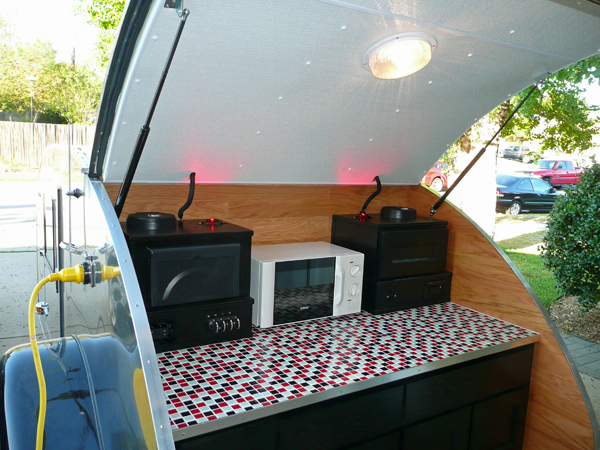48Rob wrote:I wish I could explain it in engineer talk, but since I'm not, I can't...
I still believe you don't fully understand the way the gas springs operate, and how the correct, and precise mounting points and angles make them work together.
The gas springs can be made to open with the door, and in the process change their angles considerably, allowing the range of motion you are after.
It can take some serious study (or ask an engineer) but it can be made to work perfectly.
On my trailer, the spring starts at one angle, and ends at another.
When open, the spring is about an inch from being fully extended.
When it is being closed, it compresses to nearly the closed position, and then through the rest of the door travel (while the door is being closed) it begins to open again.
The big stumbling block most have when trying to visualize the operation is assuming that the spring, in order to work, must be positioned like the typical broomstick hatch support, that is, from the counter out toward the hatch handle.
The springs, to work properly, are installed the other direction.
Rob
I second what Rob said.
My hatch is almost six feet long and weighs a ton (figuratively.) Before I installed gas springs it was all could do to lift it. I had to use a two-step "clean and jerk" movement to open the hatch. After the gas springs were installed, it takes about a 5-10 pound pull for the first foot or so and then it lifts it the rest of the way. Closing it is about the same - about a 5-10 pound pull and then the weight of the hatch causes it to close slowly.
In the picture below, you can see I used a reverse orientation on the gas springs. (In the standard orientation, the hatch gas spring brackets are closer to the hatch hinge than the galley mounts.)

In this orientation, the springs push down on the middle of hatch when closed, rather than trying to push up the hatch near the hinge as in the standard orientation. The only down side that I see in the reverse orientation is that the springs rotate with the hatch so you have to have side clearance for the springs when the hatch is closed.
I don't remember what force my springs were. I do know that I had to swap out for the next size up. (I made sure that whatever length springs I chose there were multiple forces/pressures in that length.)
measurements
where it will go




